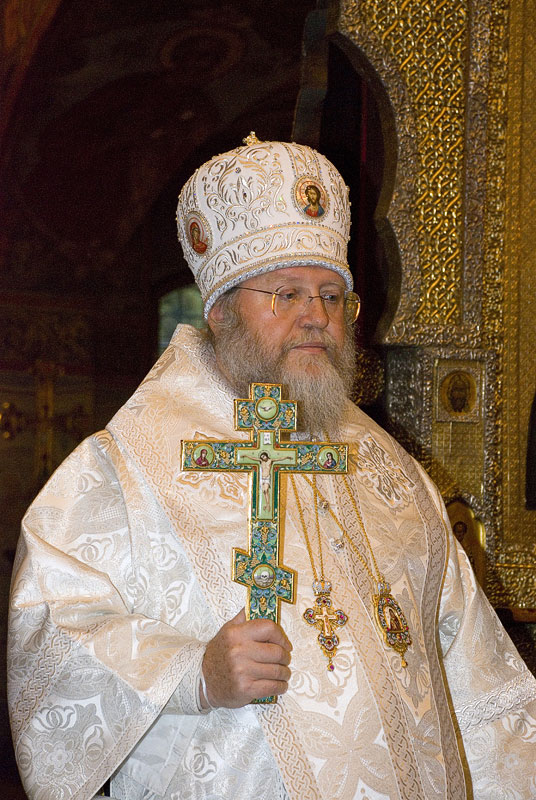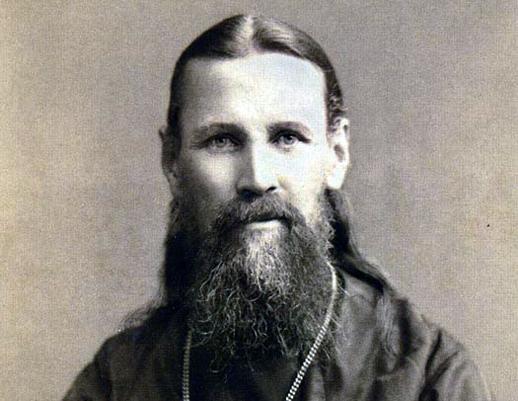Nativity Epistle of His Eminence Metropolitan Hilarion of Eastern America and New York, First Hierarch of the Russian Orthodox Church Outside of Russia
Most Reverend fellow archpastors, most honorable fathers–concelebrants,
God-loving monastics, dear brothers and sisters!
God-loving monastics, dear brothers and sisters!
Motivated
by the best thoughts and deepest feelings of brotherly love and
spiritual joy, I greet the faithful children of the Russian Church
Abroad, scattered worldwide as God's wheat, with the celebration of the
Nativity of Christ. I send my sincere wish from remote Australia that
the coming new 2014th year bring rich spiritual fruit for each of us
individually and for the entire Church!
In their
writings the Holy Fathers of the Church portray the Feast of the
Nativity as great, universal and joyful; the beginning and basis for all
other Feasts. It is no wonder the Holy Church sings:
"Christ is born, give ye glory, Christ cometh from the heavens. Meet ye Him, Christ is on earth, be ye exalted ..."
The Holy
Church calls upon us to worthily celebrate the Nativity of Christ. It
was not that long ago that in many countries Christians laid aside
worldly and earthly cares. Government offices shut down, trade ceased
and everyone hurried to God’s churches for festive services during which
all prayed and partook of the Holy Mysteries of Christ. After the
services many engaged in works of piety, visiting hospitals and prisons,
providing substantial assistance to the poor. Philanthropic assistance
to the poor and orphaned was inherently characteristic of our ancestors.
Not a Feast went by without being accompanied by attention to those
that struggle and are heavy laden (Matt 11:28).
With the
simplicity of the shepherds, let us go to the cave in Bethlehem to
worship the living God Who became a living Man. In other words, let us
go to church bringing the Infant Christ the gift of warm tears of
compunction, a heart enlivened with delight and boundless devotion; and
to our neighbors and the needy – benefaction and love.
It is time
for us, beloved, to bless ourselves with the Cross of Christ — the
cross of self-sacrifice and love in the spirit of light filled Christian
understanding. It is time for us to improve in all aspects of our
lives. Let us contemplate this during these holy days, referred to as
"Christmas-tide", and make a firm decision to become better, closer to
God and to each other.
I take
this opportunity with great pleasure to announce the upcoming XIII
All-Diaspora Youth Conference to be held in San Francisco from June 27
to July 4 this year. This forum will be devoted to missionary work in
the field of philanthropy and will coincide with the 20th anniversary of
the glorification of St. John the Wonderworker (Maximovich) by the
Russian Church Abroad. This great hierarch of the Russian diaspora
exemplified a life of prayer, a life active in selfless good deeds. On
behalf of the Synod of Bishops and Archbishop Kyrill, the ruling bishop
of the Western American Diocese, I extend a heartfelt invitation to our
clergy and representatives of our youth to this gathering. I hope that
this conference called "In the Footsteps of St. John" will spiritually
and intellectually enrich all the participants. Concurrent with the
Youth Conference a Council of Bishops will be held to discuss the
pressing issues of internal Church life and the external ministry of our
dear Church. This will also give our Archpastors the opportunity to
participate in important discussions with our young people. May these
general Church gatherings, for which we prayerfully prepare, vouchsafe
us the mercy and blessings from God: inexhaustible heroism, courage,
vigilance of spirit, a selfless, captivating and inspiring faith, and
other gifts of grace, so necessary in serving the Church, in serving God
and people in our complex world.
May the
coming New Year, beloved Archpastors, pastors, brothers and sisters, be
one of Christian renewal of our hearts - a year of spiritual sobriety
and ennoblement of our entire life! Let us become genuinely and deeply
aware of the necessity of spiritual struggle, dictated by the spirit of
life, and concern ourselves with the conscientious fulfillment of all
our Christian duties: whether they are personal, family or employment
responsibilities, or our duty as Orthodox Christian members of the
Church, i.e. performing generous charitable works. May the feast be for
us a time of prayer, the strengthening of our internal energies, the
refreshment of our soul with Christian ideals, feelings and activities!
With love in the new-born Christ and requesting your holy prayers,
†Hilarion,
Metropolitan of New York & Eastern America,
First Hierarch of the Russian Orthodox Church Outside Russia
Metropolitan of New York & Eastern America,
First Hierarch of the Russian Orthodox Church Outside Russia
Nativity of Christ
2013 / 2014
2013 / 2014


